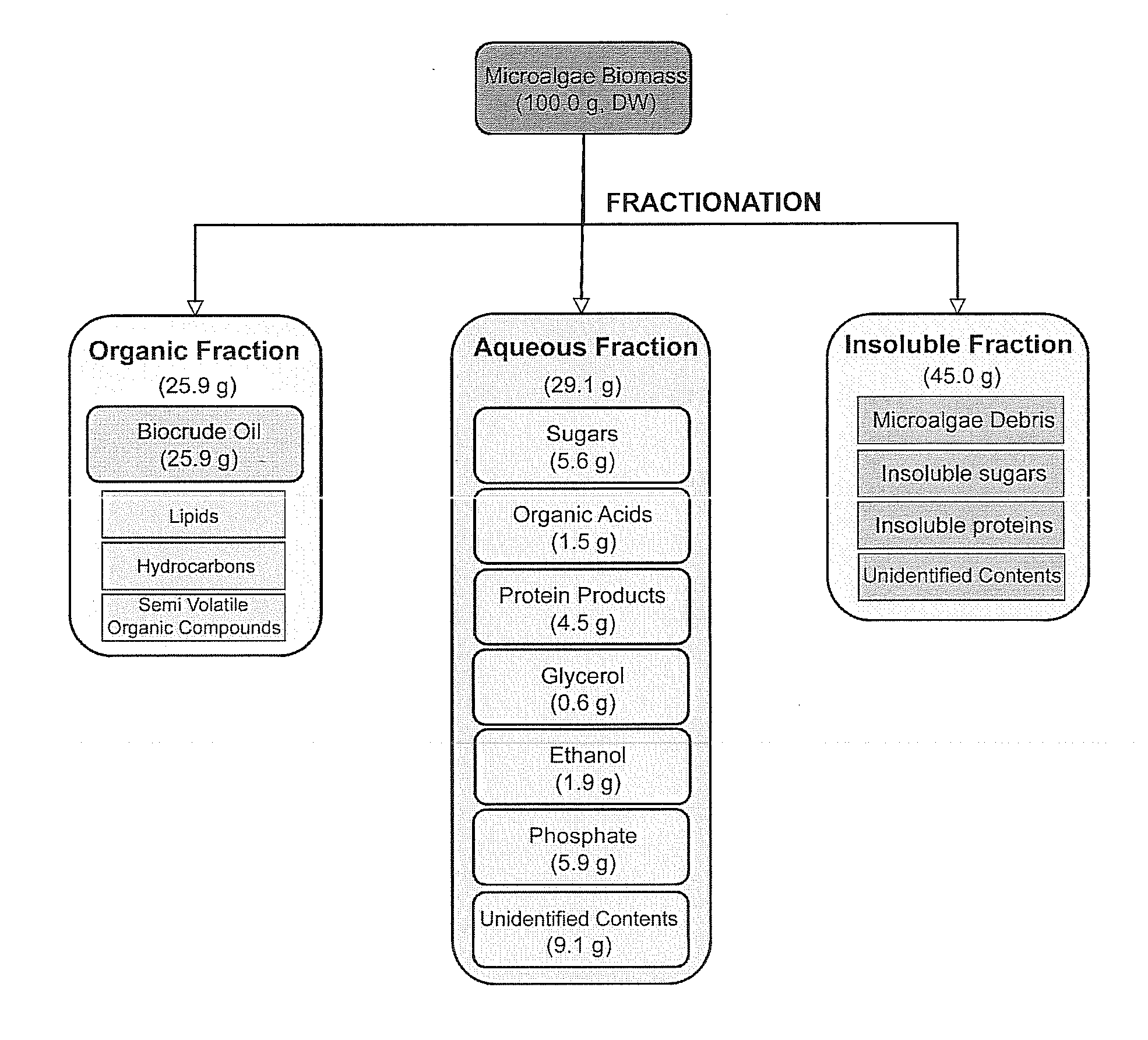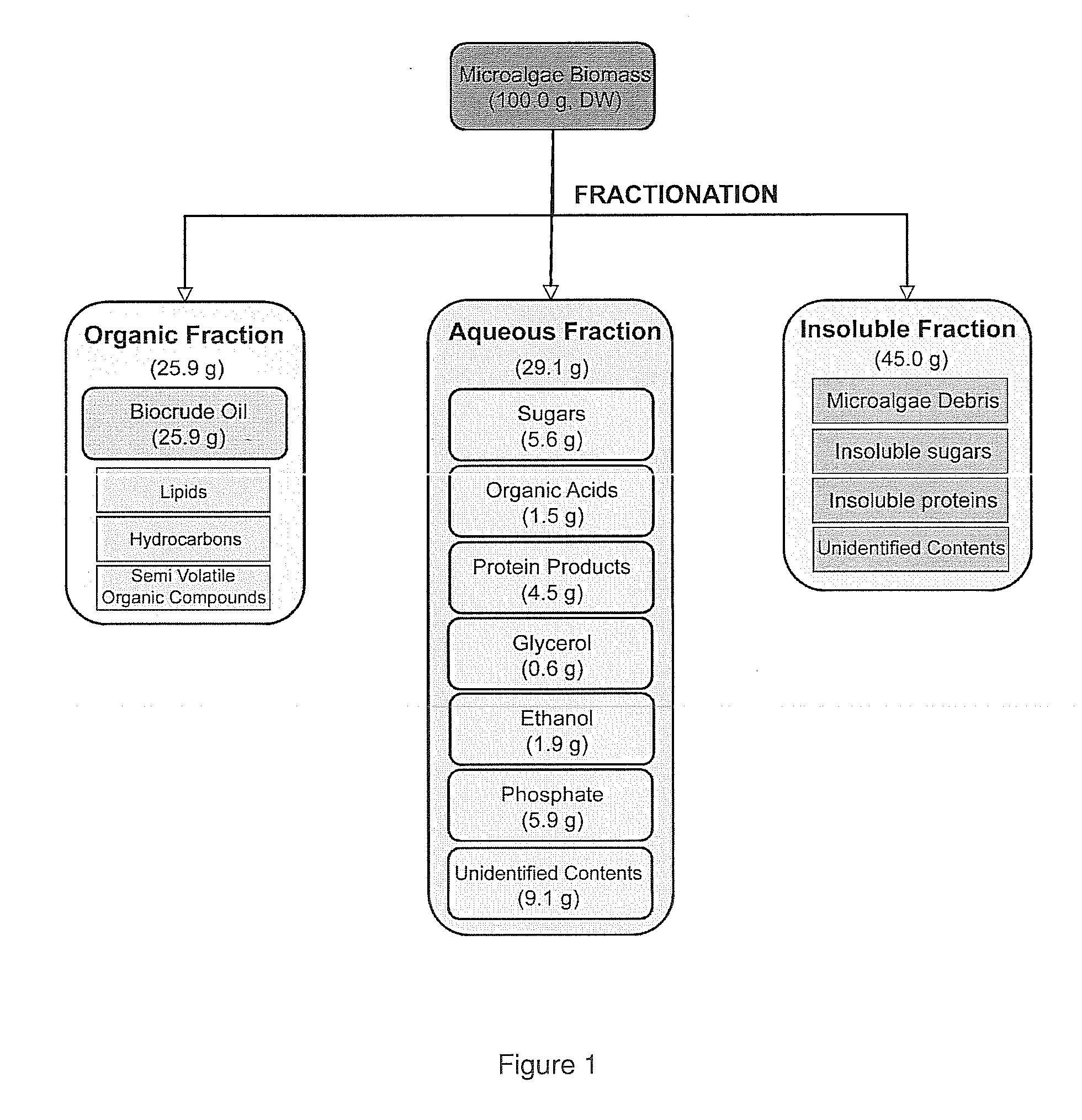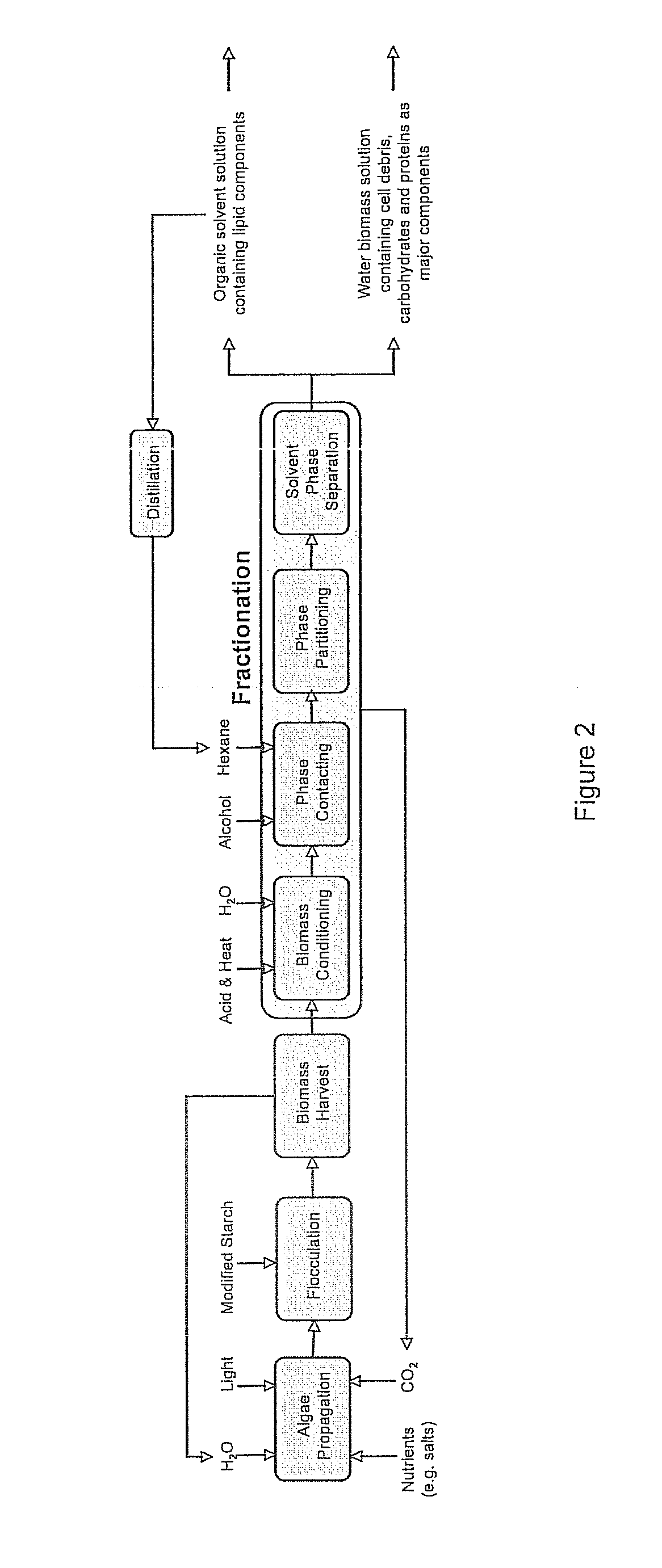Algae biomass fractionation
- Summary
- Abstract
- Description
- Claims
- Application Information
AI Technical Summary
Problems solved by technology
Method used
Image
Examples
example 1
Microalgae Biomass Fractionation
[0153]Following the invented biomass fractionation process shown in FIG. 1, a selected Nannochloropsis sample (the same sample was used in Examples 1, 10, 13, and 16 unless specified, the microalgae samples used in different examples were different from one another) was fractionated into three main fractions (FIG. 2). Upon normalization of the experimental results to “grams of component per 100 grams of dry weight based biomass”, 25.9 g of biocrude oil containing lipids, hydrocarbon chains, and semi volatile organic compounds was fractionated into the organic solvent (hexane). The sugars (6.2 g), organic acids (1.5 g), protein products (4.5 g), glycerol (0.6 g), ethanol (1.9 g), phosphate (5.9 g), and unidentified contents (9.1 g), presumably including solubilized CO2, diverse salts, and etc.) were released to aqueous fraction. Although there remained 45.0 g of insoluble materials, a majority of cell (55%) components were fractionated for further alte...
example 2
Fractionation of Lipid Components from Microalgae
[0154]Fractionating lipids from a Nannochloropsis species whose lipid material accounts for approximately 43% of dry weight as an example, a sample of this Nannochloropsis sp. (the same sample was used in Examples 2, 6, 7, and 8) biomass containing 18.9% dry weight solids (DWS) was first resuspended in water and the pH was adjusted to about 2.0 by adding 1.3 g of a combination of 50% phosphoric acid and 50% sulfuric acid (TABLE 1) in a 300 ml beaker. The mixture was heated to 60° C. for 15 minutes with agitation.
TABLE 1ComponentsWeightParts by weightWeight %Algae as DWS9.49g1.00 4.54%Water, polar solvent118.90g12.5356.83%Hexane, non-polar solvent80.83g8.5238.63%Total209.22g22.05 100%Conditioning acid1.3g0.14—
[0155]This combination of chemical and mechanical treatment of algae cells generated a population of partially disrupted (˜50% cells were disrupted based on microscopic observation) microalgae cells. Surprisingly, these partially ...
example 3
pH Variation in the Fractionation of Lipid Components from Microalgae
[0157]Five aliquots of 52.5 g (dry weight) of a Nannochloropsis sp. biomass was suspended with 787.5 g of water and the pH was adjusted to 1, 3, 5, and 7 with sulfuric acid. The aqueous suspension was pre-conditioned at 120° C. for 60 minutes with agitation. Then, 787.5 g of hexane was added to afford a fractionation mixture with the biomass:water:hexane ratio of 1:15:15. The lipid fractionation was performed in a positive displacement roller type pump for 30 minutes at 80° C. After fractionation, the aqueous phase and the hexane phase were separated by centrifugation. The lipid components fractionated by hexane was recovered by distillation of hexane. The aqueous biomass solution was fractionated once again by following an identical procedure. The lipids were combined and weighed for calculation of the yields. As shown in TABLE 2, the microalgae lipid fractionation under stronger acidic condition showed a higher y...
PUM
| Property | Measurement | Unit |
|---|---|---|
| Temperature | aaaaa | aaaaa |
| Temperature | aaaaa | aaaaa |
| Temperature | aaaaa | aaaaa |
Abstract
Description
Claims
Application Information
 Login to View More
Login to View More - R&D
- Intellectual Property
- Life Sciences
- Materials
- Tech Scout
- Unparalleled Data Quality
- Higher Quality Content
- 60% Fewer Hallucinations
Browse by: Latest US Patents, China's latest patents, Technical Efficacy Thesaurus, Application Domain, Technology Topic, Popular Technical Reports.
© 2025 PatSnap. All rights reserved.Legal|Privacy policy|Modern Slavery Act Transparency Statement|Sitemap|About US| Contact US: help@patsnap.com



